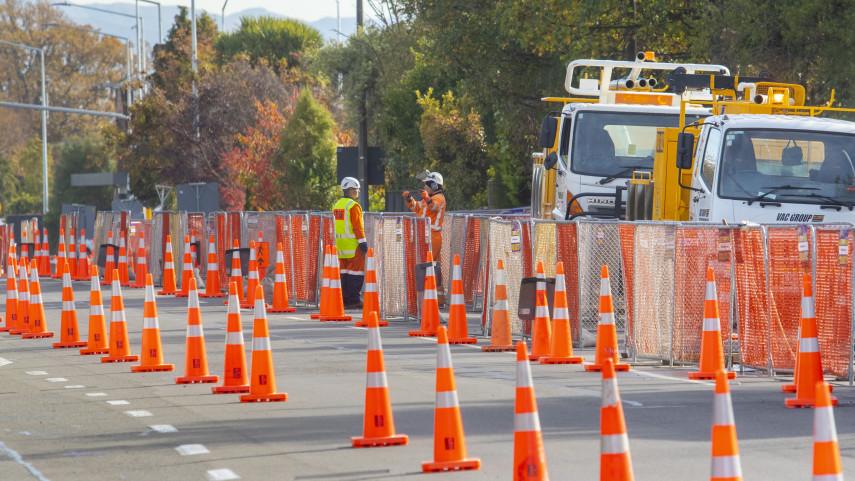Business
New Traffic Management Guidelines Aim to Reduce Road Cones Nationwide

The New Zealand government is pushing for a significant overhaul in traffic management practices, as Transport Minister Chris Bishop mandates councils across the country to adopt a new traffic management guide. Failure to comply may result in the loss of crucial transport funding, a move that reflects ongoing concerns over the excessive use of road cones in urban areas.
The new guidelines are set to replace the existing traffic management code of practice, which Bishop criticizes for being excessively prescriptive. He noted that this rigidity has led to an overabundance of traffic cones, even in low-traffic areas. “We still see ridiculous temporary traffic management measures on local streets, such as quiet cul-de-sacs covered in road cones because of minor work on a footpath,” Bishop stated during an interview with RNZ.
Bishop emphasized that each work site must be evaluated on an individual basis, with safety measures tailored to the specific hazards presented. To address the issue of unattended work sites, the government plans to enhance on-street monitoring and inspections, aiming to reduce the instances of cones left out unnecessarily.
Despite the push for change, there remains a lack of clarity regarding the financial implications of temporary traffic management (TTM) initiatives. When questioned by The Star, a city council representative acknowledged that the council does not currently track overall spending on TTM. “The council does not currently track total spending on temporary traffic management because it is delivered through a range of mechanisms and business units across the organisation,” the representative explained. TTM is utilized not only for transport projects but also by parks and events teams, complicating financial reporting processes.
To improve transparency, the city council is working on updates to financial reporting that will allow for better identification of TTM costs at the project level. Although the new TTM guide has not yet been formally adopted by the council, some contractors have started trialing its provisions.
The focus of the new guidelines is to ensure that temporary traffic management is appropriately scaled to the risks associated with specific projects. The council has not mandated the exact number of road cones to be used, leaving that decision up to contractors. This lack of regulation raises questions about the extent of cone usage at various sites, as the council does not monitor the number of cones deployed or the associated costs.
As councils prepare for the transition to these new guidelines, the hope is that a more flexible and risk-based approach will lead to better traffic management and a reduction in unnecessary road cone usage across New Zealand.
-

 World4 months ago
World4 months agoTest Your Knowledge: Take the Herald’s Afternoon Quiz Today
-

 Sports4 months ago
Sports4 months agoPM Faces Backlash from Fans During Netball Trophy Ceremony
-

 Lifestyle4 months ago
Lifestyle4 months agoDunedin Designers Win Top Award at Hokonui Fashion Event
-

 Entertainment4 months ago
Entertainment4 months agoExperience the Excitement of ‘Chief of War’ in Oʻahu
-

 Sports4 months ago
Sports4 months agoLiam Lawson Launches New Era for Racing Bulls with Strong Start
-

 World5 months ago
World5 months agoCoalition Forms to Preserve Māori Wards in Hawke’s Bay
-

 Lifestyle4 months ago
Lifestyle4 months agoDisney Fan Reveals Dress Code Tips for Park Visitors
-

 Health4 months ago
Health4 months agoWalking Faster Offers Major Health Benefits for Older Adults
-

 Politics4 months ago
Politics4 months agoScots Rally with Humor and Music to Protest Trump’s Visit
-

 Top Stories5 months ago
Top Stories5 months agoUK and India Finalize Trade Deal to Boost Economic Ties
-

 Health2 months ago
Health2 months agoRadio Host Jay-Jay Feeney’s Partner Secures Visa to Stay in NZ
-

 World5 months ago
World5 months agoHuntly Begins Water Pipe Flushing to Resolve Brown Water Issue









